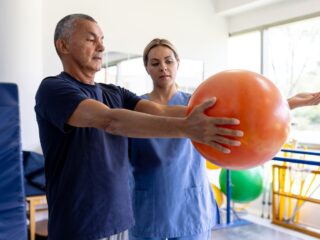
Scoliosis is a medical condition characterized by an abnormal curvature of the spine. However, this article sets out to debunk that misconception and reassure individuals living with scoliosis that physical activity is possible and beneficial. By looking at the latest research, personal stories, and expert opinions, we aim to shed light on how individuals can remain active, participate in sports, and maintain a healthy lifestyle despite their scoliotic condition. So, if you or someone you know has scoliosis, rest assured that this article will inspire and empower you to embrace exhilarating activities without letting the condition hold you back. Whether engaging in regular exercise, joining sports teams, or exploring alternative fitness options, there are countless opportunities for individuals with scoliosis to lead an active and fulfilling life.
Boost Your Health with Suitable Exercises for Scoliosis
One of the key ways to boost your health and manage scoliosis through exercise is to focus on strengthening the core muscles. Strengthening the muscles that surround the spine can provide better support and stability, reducing pain and discomfort. Exercises for scoliosis, such as planks, bird dogs, and abdominal crunches, can effectively strengthen the core muscles.
Low-impact aerobic exercises can also be beneficial for individuals with scoliosis. Swimming, cycling, and walking can help improve cardiovascular fitness and increase lung capacity. These exercises are gentle on the spine and joints while providing a good workout. It is essential to start slowly and gradually increase intensity and duration while listening to your body’s limits.
Having scoliosis doesn’t mean you can’t be active. With the right exercises and guidance from healthcare professionals, individuals with scoliosis can continue to lead healthy and active lifestyles. Individuals can boost their health and well-being while managing their scoliotic condition by focusing on core strengthening exercises and incorporating low-impact aerobic activities.
Impact of Regular Exercise on Scoliosis Management
While scoliosis may lead to concerns about engaging in physical activity, evidence suggests that exercise can help improve the condition and alleviate symptoms. Exercise can increase muscle strength and flexibility, which can help support the spine and promote better alignment.
Physical activity releases endorphins, natural painkillers that can also improve blood circulation, delivering nutrients and oxygen to the muscles and tissues surrounding the spine. This can help relieve muscle strain and reduce tension in the back. Additionally, exercise can help maintain a healthy weight, which can positively impact scoliosis management by preventing excessive stress on the spine.
In conclusion, regular exercise can play a vital role in managing scoliosis. By strengthening muscles, improving posture, reducing pain, and promoting overall wellness, physical activity can help individuals with scoliosis lead active and fulfilling lives. It is essential to consult with healthcare professionals or specialists to develop an exercise program tailored to individual needs and consider the specific curve pattern and severity of scoliosis.
Designing Your Personalised Scoliosis Exercise Routine
Designing a personalized exercise routine is crucial for individuals with scoliosis to address their needs and limitations. It is recommended to consult with a healthcare professional or physical therapist specializing in scoliosis management to create an exercise plan tailored to one’s unique condition. From there, exercises can be selected to target the specific muscles that can help stabilize and support the spine, improving posture and reducing pain.
Stretching exercises help improve flexibility and range of motion while muscle-strengthening exercises focus on building strength in the muscles surrounding the spine, which helps in providing stability. Low-impact aerobic activities, such as swimming or cycling, help improve cardiovascular health without putting excessive strain on the spine. Individuals with scoliosis can promote overall physical well-being and lead an active, fulfilling lifestyle by designing a personalized exercise routine.














